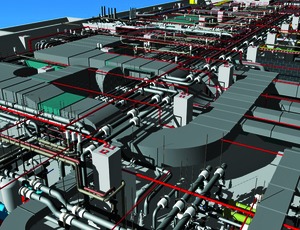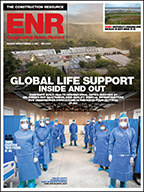
To help users benchmark the performance of building information modeling software and applications in a common environment, the Washington, D.C.-based National Institute of Building Sciences' buildingSMART alliance has released a reference set of BIM open standards.
Three models created by the U.S. Army Corps of Engineers' Engineer Research and Development Center, Champaign, Ill., include an apartment building, a medical clinic and an office building. Each model includes architectural, mechanical, electrical and plumbing information.
“These common BIM files are a very good step forward because they give you a reference point,” says Chris Moor, director of industry initiatives at the American Institute of Steel Construction, Chicago. AISC is a supporter of buildingSMART.
Phil Wirdzek, executive director and founding president of the International Institute of Sustainable Laboratories, Arlington, Va., another alliance supporter, says he looks at BIM not just for design and construction but for managing knowledge about a facility for maintenance, improvements and upkeep over its life cycle. “BIM tools go beyond design-build and should be part of the operation side [of the building's life],” he says.
“You can buy a box of cereal and read all the health information on the side, but we're not giving the [equivalentinformation] for buildings,” says Wirdzek. “Our hope is to try to build some collaboration to develop around this research framework [and] shape what the needs are and how we'll get there.”
Deke Smith, executive director of the buildingSMART alliance, says the group already has brought together key professional associations—including the American Institute of Architects and the American Society of Civil Engineers—to find agreement on BIM standards. “BIM standards will help people not have to reinvent the wheel,” says Smith. Files are online at bimserver.org.



Post a comment to this article
Report Abusive Comment